Bulguksa Hanok Farm Stay [Korea Quality] / 불국사한옥팜스테이 [한국관광 품질인증]
10.6Km 2022-04-06
5-52, Jinti-gil, Gyeongju-si, Gyeongsangbuk-do
+82-10-5489-1742
Bulguksa Hanok Farm Stay is an accommodation that offers many programs located right below Bulguksa Temple in Jinhyeon-dong, Gyeongju-si, Gyeongsangbuk-do. There is a total of four guest rooms. Every guest room has a bathroom and a kitchen inside. You can also cook in the rooms as they are equipped with cooking appliances such as a rice cooker, microwave, and electric stove. Ouga is a double-story unit, and the guest rooms on the first floor and the second floor are rented separately. On the first floor, there is an ondol room big enough for four people, and the ondol room on the second floor is big enough for three people and has a nice view. Both rooms have a terrace where guests can enjoy a barbecue grill. Bogyeonga also has two guest rooms that are rented separately. All of the rooms are ondol type rooms. In the Bogyeonga building, only room 1 has a double-story structure. Guests staying in the Bogyeonga building can have a barbecue grill in the terrace. A well-maintained garden is surrounding the hanok building, and there is also a 1,000-square-meter foot volleyball court in the lawn. A unique benefit of staying in Bulguksa Hanok Farm Stay is that you can participate in farming programs. You can pick apples from 400 apple trees on the farm. You can also participate in various programs themed on the food crops grown in the farm, including persimmon, quince, blueberry, lettuce, and tomato. Nearby tourist attractions include Bulguksa Temple, Seokguram Grotto, Bomun Tourist Complex, Donggung Palace and Wolji Pond, Cheomseongdae, and Woljeonggyo Bridge in Gyeongju. California Beach (water park) is also closeby.
Bulguksa Hanok Dongodang (불국사한옥동오당)
10.6Km 2024-07-25
5-58 Jinti-gil, Gyeongju-si, Gyeongsangbuk-do
010-2936-6350
Bulguksa Hanok Dongdodang is just a short five-minute walk from Bulguksa Temple, and is complete with a large parking area, clean & quiet surroundings, a cafe-like shared kitchen, and friendly service. The hanokstay is decorated with artwork made by the owner. The accommodation manages to offer a comfortable and private ambiance with just three rooms, each comprised of a bedroom, living area, bathroom, and small outdoor patio.
GUTORAN (구토란펜션)
11.4Km 2024-08-01
17-25 , Gwigye-gil, Gyeongju-si, Gyeongsangbuk-do
+82-54-746-4847, +82-10-3520-9576
Gutoran is a hanok pension in Naenam-Myeon, Gyeongju, Gyeongsangbuk-do, owned by a ceramic artist who has hand-painted and decorated the house with his own roof tiles and pottery. In front of the house is a garden and lotus pond, also decorated with ceramic works. Nearby is the owners’ pottery workshop called (‘Gutoranyo’) where visitors can take part in ceramic classes.
Gyeongju Seokguram Grotto [UNESCO World Heritage] (경주 석굴암 [유네스코 세계문화유산])
11.6Km 2023-08-24
873-243, Bulguk-ro, Gyeongju-si, Gyeongsangbuk-do
+82-54-746-9933
Seokguram Grotto was constructed by Kim Dae-Seong during the reign of King Gyeong-Deok (742-765) of the Silla Kingdom. Located 3 kilometers away by hiking trail and 9 kilometers by car from Bulguksa Temple, the grotto was designed very harmoniously with the seated Buddha facing the East Sea. It is a valuable cultural heritage that is preserved and registered as a UNESCO World Heritage on December 6, 1995.
Tomb of King Wonseong (경주 원성왕릉)
11.8Km 2020-04-04
139, Singyeipsil-gil, Gyeongju-si, Gyeongsangbuk-do
+82-54-779-6100
The tomb of the King Wonseong, 38th king of the Silla Kingdom (785-798) in Oedong-eup, Wolseong-gun, Gyeongju is Historic Site No. 26. The tomb is 21.9m in diameter and 7.7m high and is encircled by a stone fence decorated with twelve oriental zodiac images. The area is also home to a number of stone monuments that stand facing each other: Hwapyoseok (marking the border of the tomb), Muninseok (civil servant statue), Muinseok (military officer image statue) and Dolsaja (a stone lion that protects the tomb). Muinseok in particular is a favorite among visitors because of its exotic appearance. The statue is sometimes compared to a strong and charismatic person of Arabic or Persian descendant, much like the merchants who came to Silla in ancient times.
Gwaereung is styled after tombs of the Tang dynasty, but still retains all the characteristics typical of Silla tombs; namely, the stones around the tomb, the 12 oriental zodiac figures, the protective walls, and the decorative stonework.
The Oriental Medicine Resort: Chorakdang (한방테마파크 초락당)
14.5Km 2021-02-10
44-34, Gyemyeong-ro, Ulju-gun, Ulsan
+82-52-264-8001
Opened in 2001, Chorakdang is a health resort that specializes in Oriental medicine treatments. The resort offers the perfect setting for rest, relaxation, and medical treatments. The traditional hanok buildings and natural surroundings intensify the health benefits of the resort.
Tohamsan National Recreational Forest (토함산자연휴양림)
14.7Km 2021-04-08
1208-45, Bulguk-ro, Gyeongju-si, Gyeongsangbuk-do
+82-54-750-8700
Tohamsan National Recreational Forest, located in Gyeongju, is in close vicinity of major attractions such as Bulguksa Temple and Seokguram Grotto. Visitors can enjoy the culture as well as relaxing in a peaceful nature.
Hwarang Hill (화랑의언덕)
14.9Km 2024-11-01
601 Suui-gil, Sannae-myeon, Gyeongju-si, Gyeongsangbuk-do
◎ Travel information to meet Hallyu’s charm - "The Good Bad Mother"
A meadow where Kang-ho and neighborhood children often played, Hwarang Hill is touted as a prime spot for one of the best snapshots of lifetime on social media. Walk up to the cliff-end rock known as Meditation Rock, you'll see a quaint village and rice paddies stretching out below. The hilltop boasts expansive lawns and a tranquil reservoir, perfect for a peaceful landscape view. While walking and picnicking are allowed, camping and car camping are not.
Dori Village Ginkgo Tree Forest (도리마을은행나무숲)
15.3Km 2024-11-01
35-102 Do-ri, Seo-myeon, Gyeongju-si, Gyeongsangbuk-do
A thick forest formed by densely planted ginkgo trees. In the fall, the golden ginkgo leaves color the forest. Noted as a wedding photo shoot hotspot, it's where Kang-ho found the twins' bouncy ball. As you wander through the village, read the beautiful phrases written on the walls, and capture a perfect shot amidst the ginkgo forest.
Girimsa Temple (기림사)
15.3Km 2022-12-29
437-17, Girim-ro, Gyeongju-si, Gyeongsangbuk-do
+82-54-744-2292
Girimsa Temple is located in Hamwolsan Mountain in Yangbuk-myeon, Gyeongju. The temple was built in the Silla Era and, with 16 buildings, is the second largest temple after Bulguksa.
Legend has it that the temple was originally built by the Venerable Gwang-yu, a sage from India, in the early part of the Silla Kingdom. The temple was reportedly called Imjeongsa at first, but was later changed to Girimsa after undergoing expansive renovations by Monk Wonhyo. It is still unclear exactly what year the temple was built in.
Girimsa is divided into two main areas. The first is the area around Daejeokgwangjeon Hall where the statue of Birojanabul is enshrined. The second is the area around the majestic 500-year-old bo tree (a kind of large fig tree) that is home to a wooden pagoda, the Seongbo Museum, Samsingak, Mangbujeon, and Gwaneumjeon halls. Daejeokgwangjeon Hall was first built during Queen Seondeok's reign, and was rebuilt six times since its original construction. Its simple but majestic architecture is characterized by baeheullim (aka, entasis columns) and a Dapoyangsik (Dapo-style) single-tiered gabled roof.
Girimsa is famous for Ojongsu, water that is said to have five different tastes. It consists of gamrosu, which is best for making tea; hwajeongsu, which supposedly gives comfort to the drinker; janggunsu, which makes the body stronger; myeongansu, which gives clear vision; and otaksu, which is said to sparkle so brightly that it attracts all the birds of the air. During Japanese colonial rule, the source of janggunsu, literally meaning ‘water of a general,’ was reportedly blocked off by Japanese soldiers, who were afraid the water would give the Korean people the strength to overthrow them. Except for janggunsu, water still continues to flow from each source.
On the way to Girimsa temple is Golgulsa Temple, well known for its 12 grottos. Golgulsa was originally a hermitage of Girimsa. After becoming an independent institution, it became the center of Seonmudo practice in Korea. The temple aims to promote the art of seonmudo on a national and international level.
![Bulguksa Hanok Farm Stay [Korea Quality] / 불국사한옥팜스테이 [한국관광 품질인증]](http://tong.visitkorea.or.kr/cms/resource/33/2813933_image2_1.jpg)

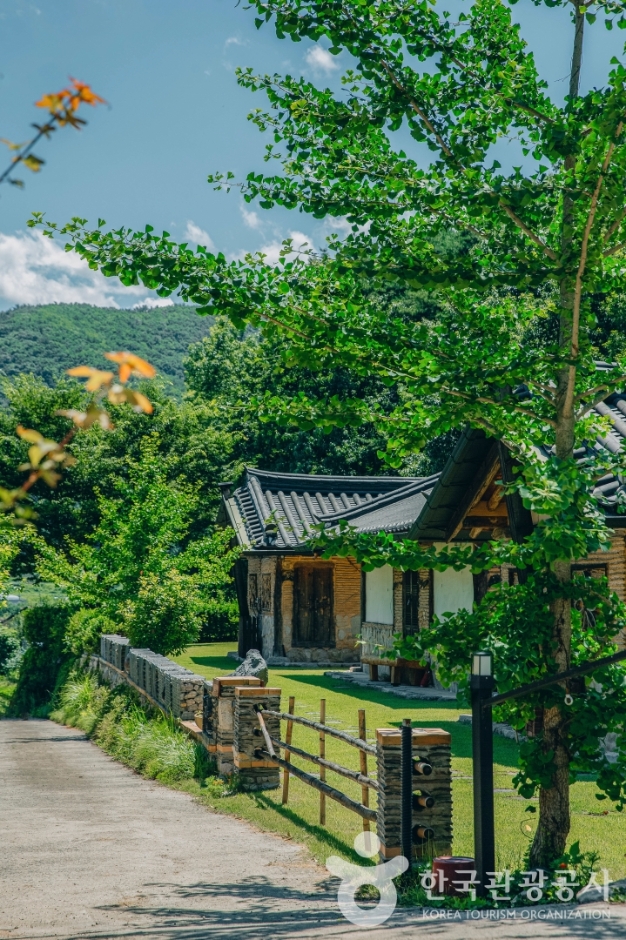
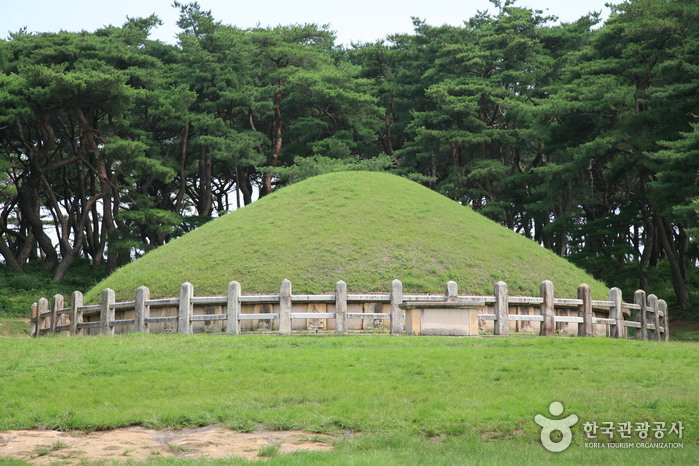
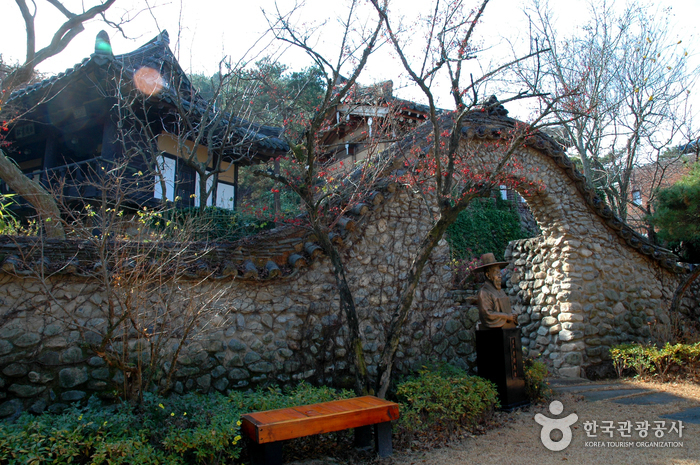

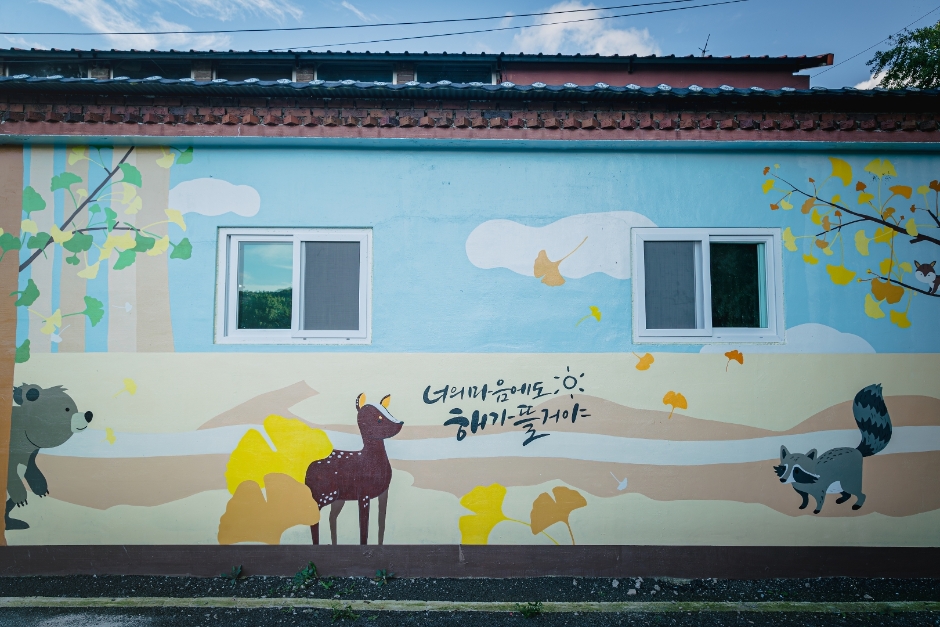
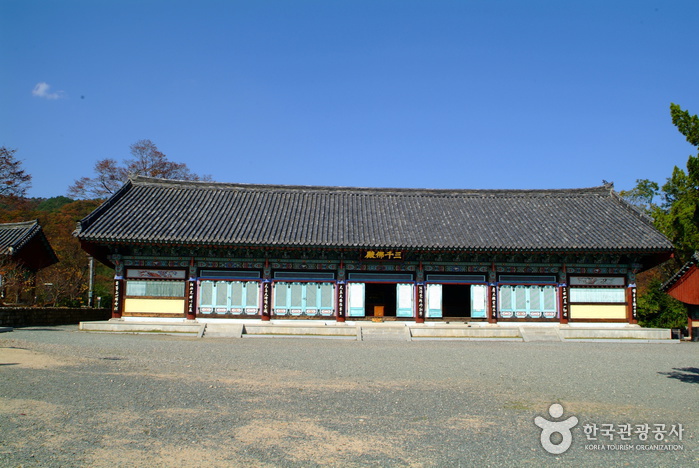
 English
English
 한국어
한국어 日本語
日本語 中文(简体)
中文(简体) Deutsch
Deutsch Français
Français Español
Español Русский
Русский